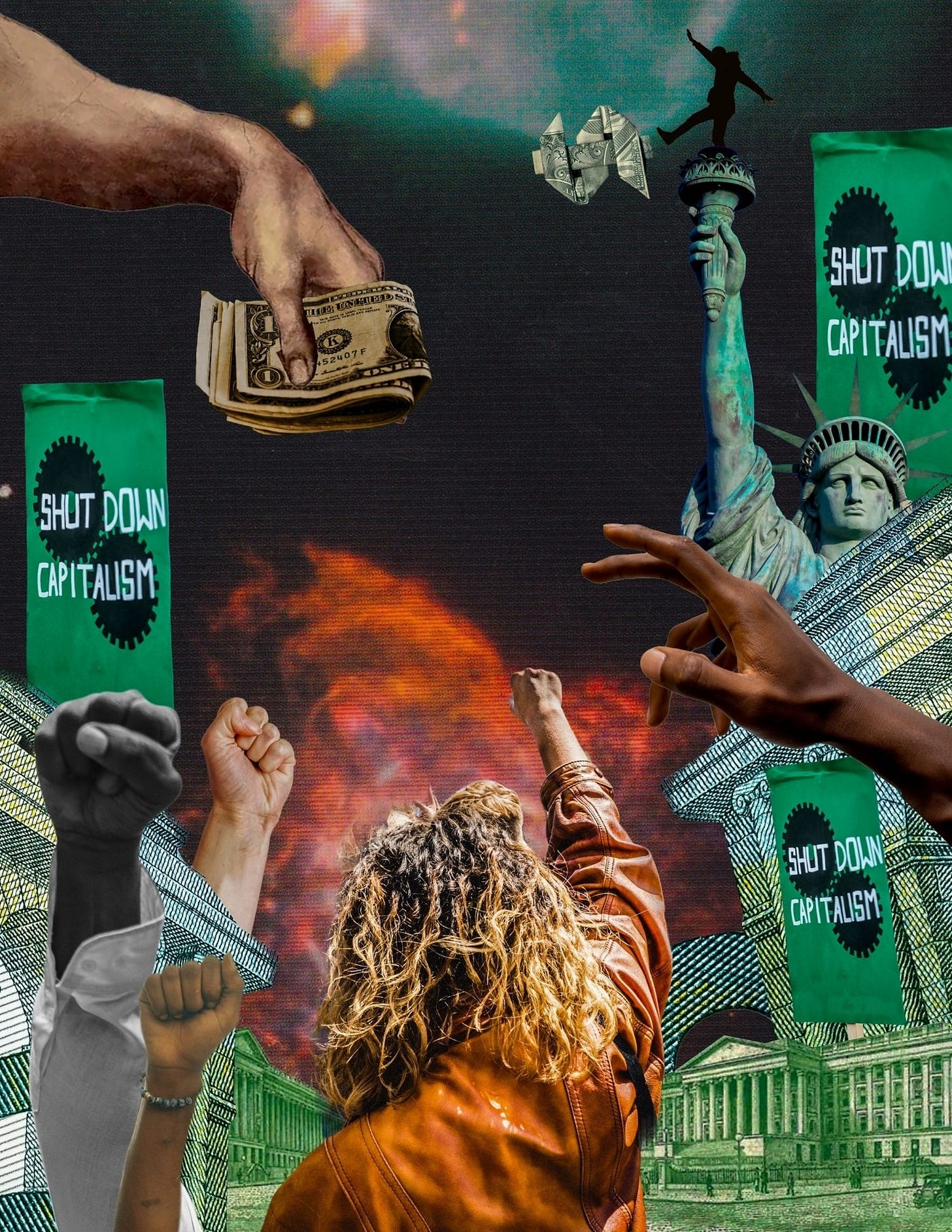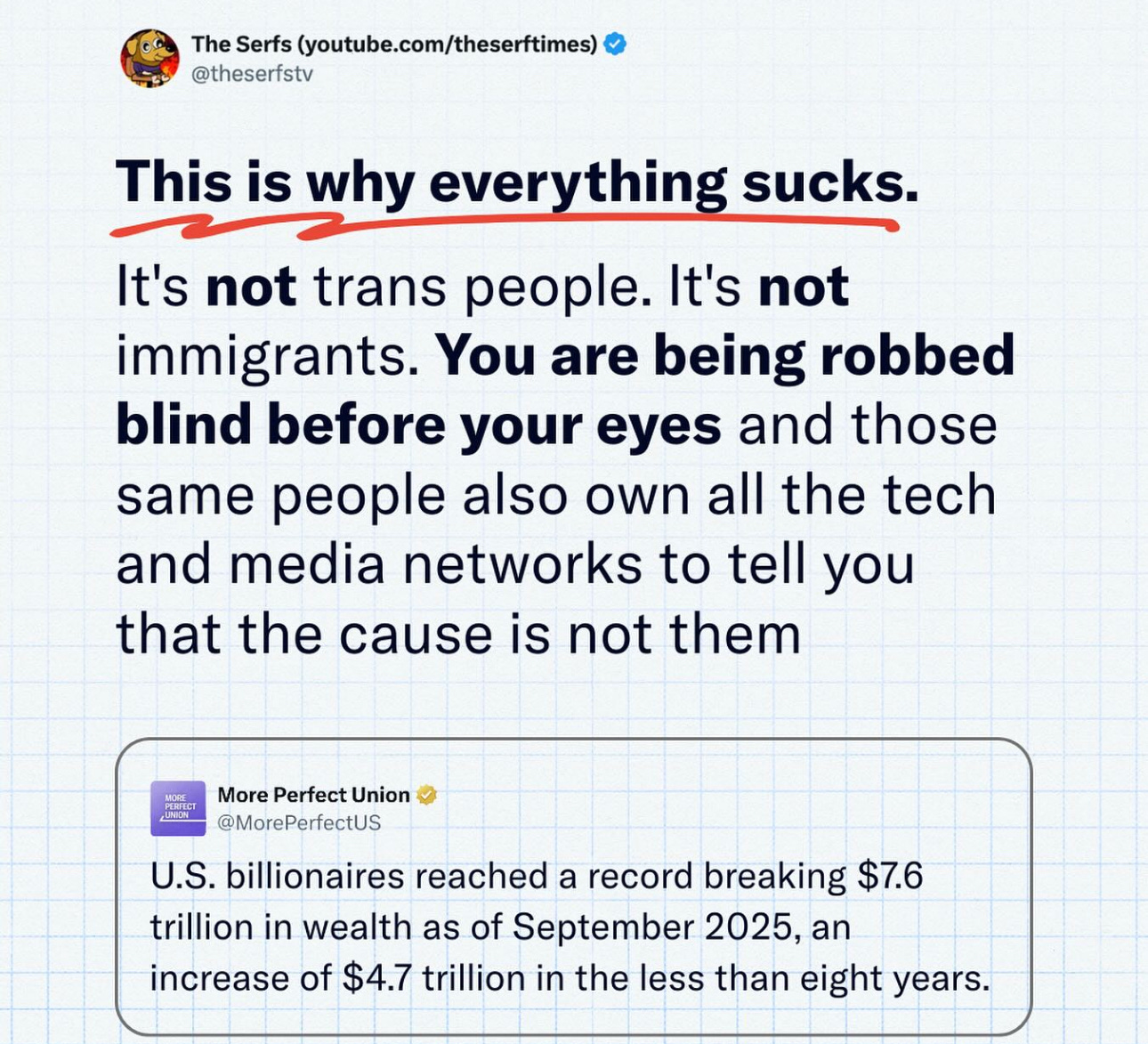What's Debt Got to Do With it?
Introducing IN THE RED: A Debt Collective Substack
Has existing felt like a zero-sum game lately?
Have you been losing sleep because your “net-worth” is in the negative, the rent is too damn high or you’ve recently considered using Klarna to purchase a burrito?
Welcome to the club.
What if I told you that being in the red—or simply existing in a society where your friends, family and the institutions that you rely on are indebted to big banks and creditors—is becoming increasingly commonplace? In fact, Americans collectively owe over $18 trillion in household debt. If being in the red feels a bit like seeing red, don’t worry. You have a lot to be mad about. The gap between the working class and the ruling class is only widening. U.S. billionaires reached a record breaking $7.6 trillion in wealth as of September 2025, an increase of 4.7 trillion in less than eight years. If you’re not angry, you’re not paying attention.
Yet, being a debtor doesn’t have to be a reason to despair. Try this: Imagine being in the red as akin to seeing the world with rose-colored glasses, not so much in a naive sense, but with a sense of optimism that can spread far and wide.
The Debt Collective blossomed out of what was perceived as a “naive” and “unrealistic” goal—debt abolition. We emerged from the Occupy Wall Street movement, where everyday folks camped out in tents and talked openly about the stress of drowning in past due balances. In 2012, several of our co-founders contributed to writing the Debt Resisters’ Operations Manual. This grassroots publication brought information often gate-kept by economists straight into the hands of working class borrowers. That was just the beginning but it wouldn’t have been possible without a North-star vision of a world where people had access to universal public and reparative goods.
I guess we were seeing the world through rose-colored glasses, huh?
It’s true, a major part of Debt Collective’s origins stemmed from a desire to bring life-changing information to the masses. In 2020, our stellar Art and Design team built upon the Debt Resisters’ Manual by creating five printable zines. These publications were both informational and wildly creative. They included comics, first-hand testimonials and interviews.
This In the Red Substack title pays homage to Art and Design’s work. Special shout out to Jen Veguilla, Becca Knight, Livia Nelson and many other former supporters and contributors. You all rock!
So, what did we learn from all this? Debt Collective’s work wouldn’t be possible without artistic and curious comrades just like you. And at a time when searching for information online can feel increasingly unhelpful, anxiety-inducing and akin to doomscrolling for days, now is the perfect time to keep the creative-debt-analysis momentum going.
Here’s what to expect from our In the Red Substack: we’ll be sharing newsletter-style roundups, which will highlight our ongoing work and upcoming events. We’ll also share throwback In the Red zine content, inspiring debtor stories, multimedia as well as visual and literary art!
How can you support our work? I’m glad you asked.
First, like, comment, share and subscribe to this Substack if you haven’t already. Any subscription and or donation will go directly to Debt Collective’s important work.

You see, while grifters like Dave Ramsey and Caleb Hammer profit from berating people with the status quo concept that everyone isn’t being personally responsible enough, Debt Collective continues to bolster a different, more liberating approach.
What’s debt got to do with the affordability crisis? Turns out, everything. We want to keep spreading the message that you aren’t living beyond your means, you’ve been denied the means to live. And we’re ready and willing to support debtors and our allies in amplifying this worldview. We look forward to Substack-ing with you!
And remember, alone our debts are a burden, but together they make us powerful.
In Solidarity,
Debt Collective Comms Team



